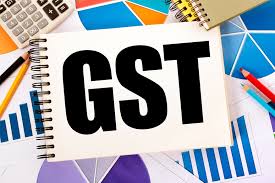Centre front-loads GST aid; Rs 75,000 crore released to states
Of the Rs 75,000 crore released now, Karnataka will be the highest recipient (Rs 8,542 crore), followed by Maharashtra (Rs 6,501 crore), Punjab (Rs 5,723 crore) and Kerala (Rs 4,122 crore).
In what could boost the liquidity of states ahead of the likely third wave of Covid-19 and to prod them to augment capital expenditure, the Union government on Thursday released a total Rs 75,000 crore to them to bridge their GST revenue shortfall. The amount released is nearly half of the estimated full-year compensation amount, to be released under a back-to-back loan facility.
This release is in addition to normal GST compensation being released every two months out of actual cess collections.
The finance ministry said the decision on compensation cess won’t alter the Centre’s market borrowing calendar for the first half of this fiscal. The government had planned to borrow Rs 7.24 lakh crore from the market in the first half, or just over 60% of the budgeted full-year target. While it had to roll out a relief package late last month in the wake of the second Covid wave, it also resorted to expenditure compression across some ministries. This is expected to substantially offset the additional fiscal cost of the package, pegged by some analysts at Rs 1.3 lakh crore in FY22.
Of the Rs 75,000 crore released now, Karnataka will be the highest recipient (Rs 8,542 crore), followed by Maharashtra (Rs 6,501 crore), Punjab (Rs 5,723 crore) and Kerala (Rs 4,122 crore).
Aided by an incipient recovery in tax revenues, state governments seem to have stepped up capital expenditure, reversing a declining trend witnessed in FY21 due to the pandemic, which dented revenues and necessitated elevated revenue spending. Data gathered by FE of 15 major states shows that these states reported combined capex of Rs 26,115 crore in April-May of the current financial year, up 129% on year. Of course, the surge is aided by a low base.
For the second year in a row, the government will borrow under special, relatively low-cost mechanism to bridge a yawning shortfall in the GST compensation cess pool and transfer the funds to states as back-to-back loans, sans any consequent fiscal cost to states.
Subsequent to the 43rd GST Council Meeting held on May 28, it was decided that the Union government would borrow Rs 1.59 lakh crore and release it to states and UTs with legislature on a back-to-back basis to meet the resource gap due to the short release of compensation on account of inadequate amount in the Compensation Fund.
While the amount borrowed under the RBI-enabled mechanism last year was Rs 1.1 lakh crore – West Bengal finance minister Amit Mitra recently wrote a letter to union finance minister Nirmala Sithraman that unpaid GST shortfall compensation to states is Rs 74,398 crore for FY21.
“The sum total of Rs 2.59 lakh crore (including cess collection of Rs 1 lakh crore) is expected to exceed the amount of GST compensation accruing in FY22,” finance ministry said in a statement.
All eligible states and UTs have agreed to the arrangements of funding of the compensation shortfall under the loan facility. For effective response and management of Covid-19 pandemic and a step-up in capital expenditure all States and UTs have a very important role to play.
“For assisting the states/UTs in their endeavour, ministry of finance has frontloaded the release of assistance under the back-to-back loan facility during FY 2021-22 by Rs 75, 000 crore (almost 50 % of the total shortfall for the entire year) released today in a single instalment. The balance amount will be released in the second half of 2021-22 in steady instalments,” the ministry said.
The release of Rs 75,000 crore being made now is funded from borrowings of the Union government in 5-year securities, totalling Rs 68,500 crore and 2-year securities for Rs 6,500 crore issued in the current financial year, at a weighted average yield of 5.60% and 4.25% per annum respectively.
It is expected that this release will help the states/UTs in planning their public expenditure among other things, for improving, health infrastructure and taking up infrastructure projects, the ministry added.
Source:https://www.financialexpress.com/economy/centre-front-loads-gst-aid-rs-75000-crore-released-to-states/2291285/
Download our App to get knowledge updates::: https://play.google.com/store/apps/details?id=com.app.gstmitra
Join Our Telegram Channel for more updates:https://t.me/praveengst



Comments
Post a Comment